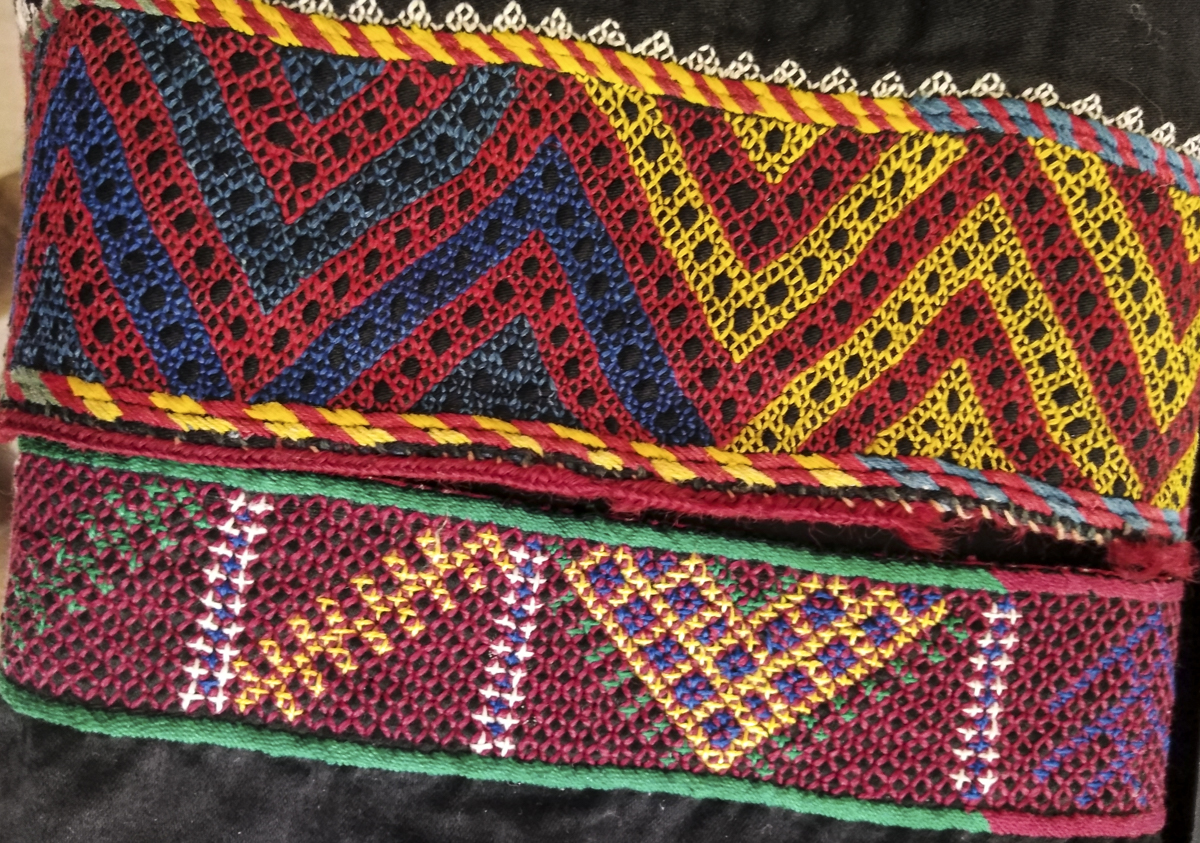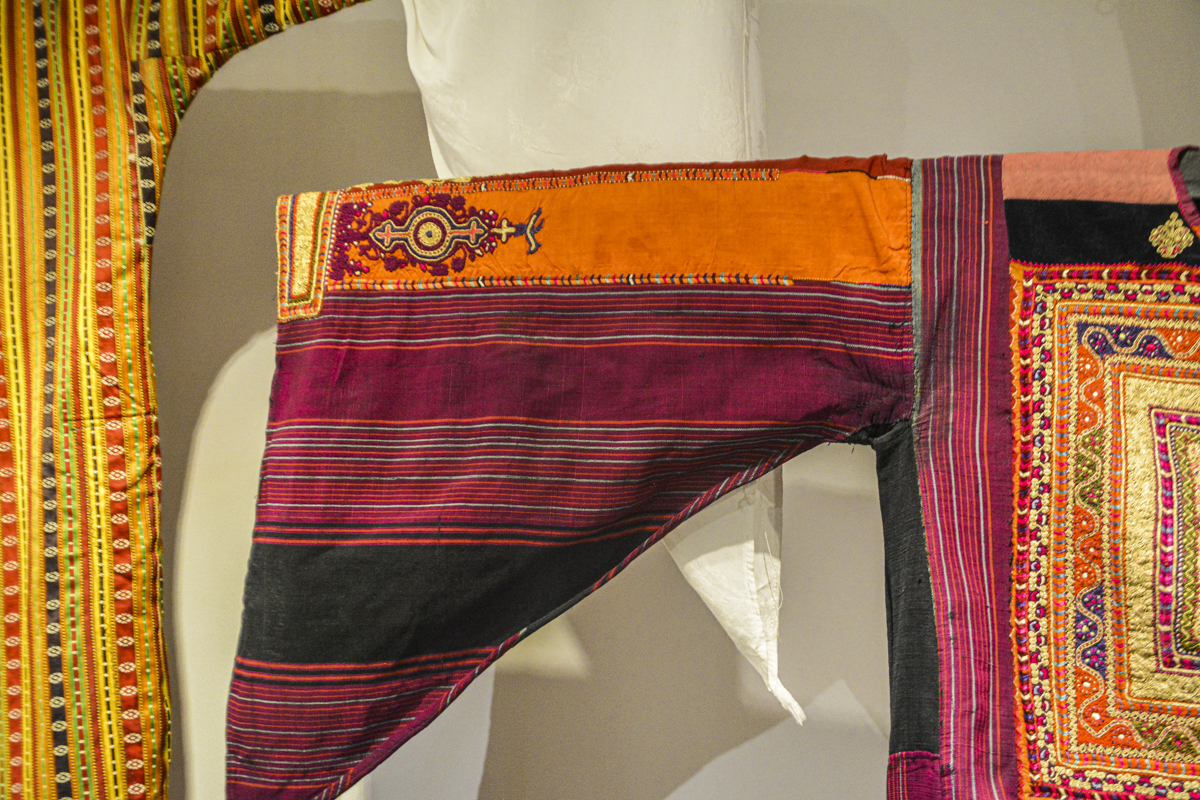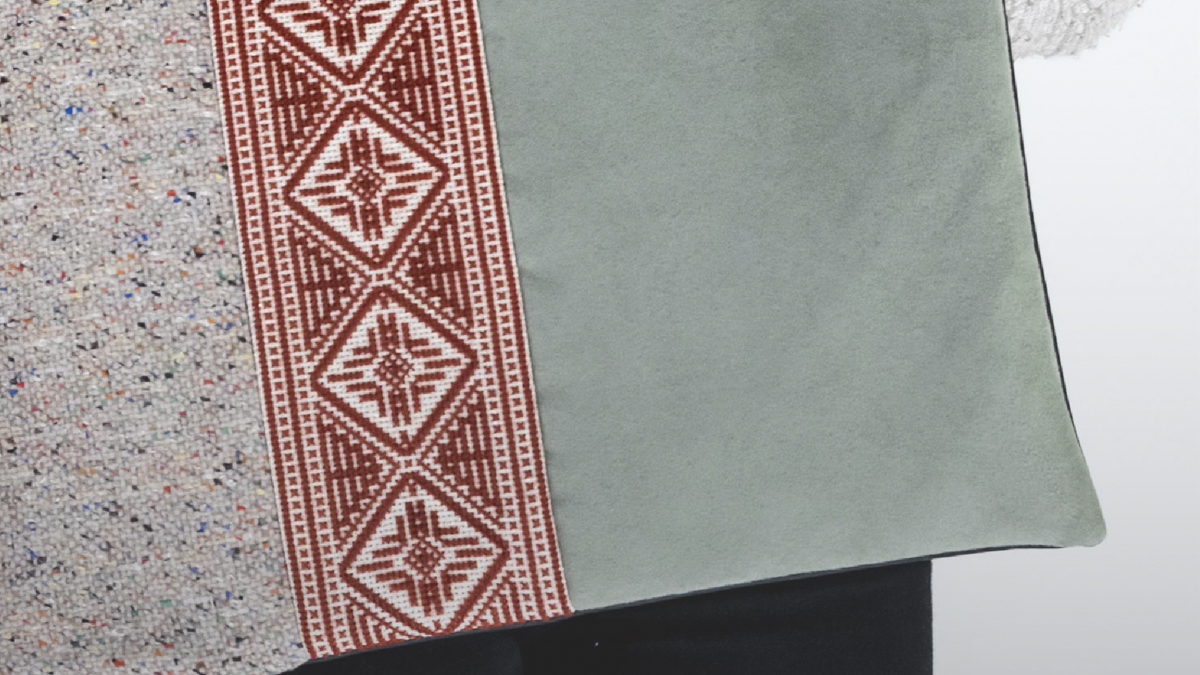
Exploring Palestinian Identity in Jordan’s Baqa’a Refugee Camp
STORY BY HEATHER M. SURLS
ARTWORK BY HAIFA ABU KHDAIR
In Jordan’s Baqa’a camp for Palestinian refugees, I sat with several women and piles of their cross-stitch embroidery. A fan blew the late May heat through a simple but neat room, where we sat on brown couches drinking small goblets of juice, followed by Turkish coffee and tea. Zahieh Ahmad Saeed Abu Rases and her relatives showed me embellished pillowcases, a mirror framed in a kaleidoscope of colors and patterns, clocks stitched on white Aida cloth, and sections of unfinished thobes, traditional Palestinian dresses.



